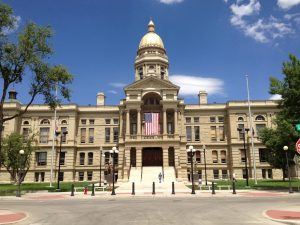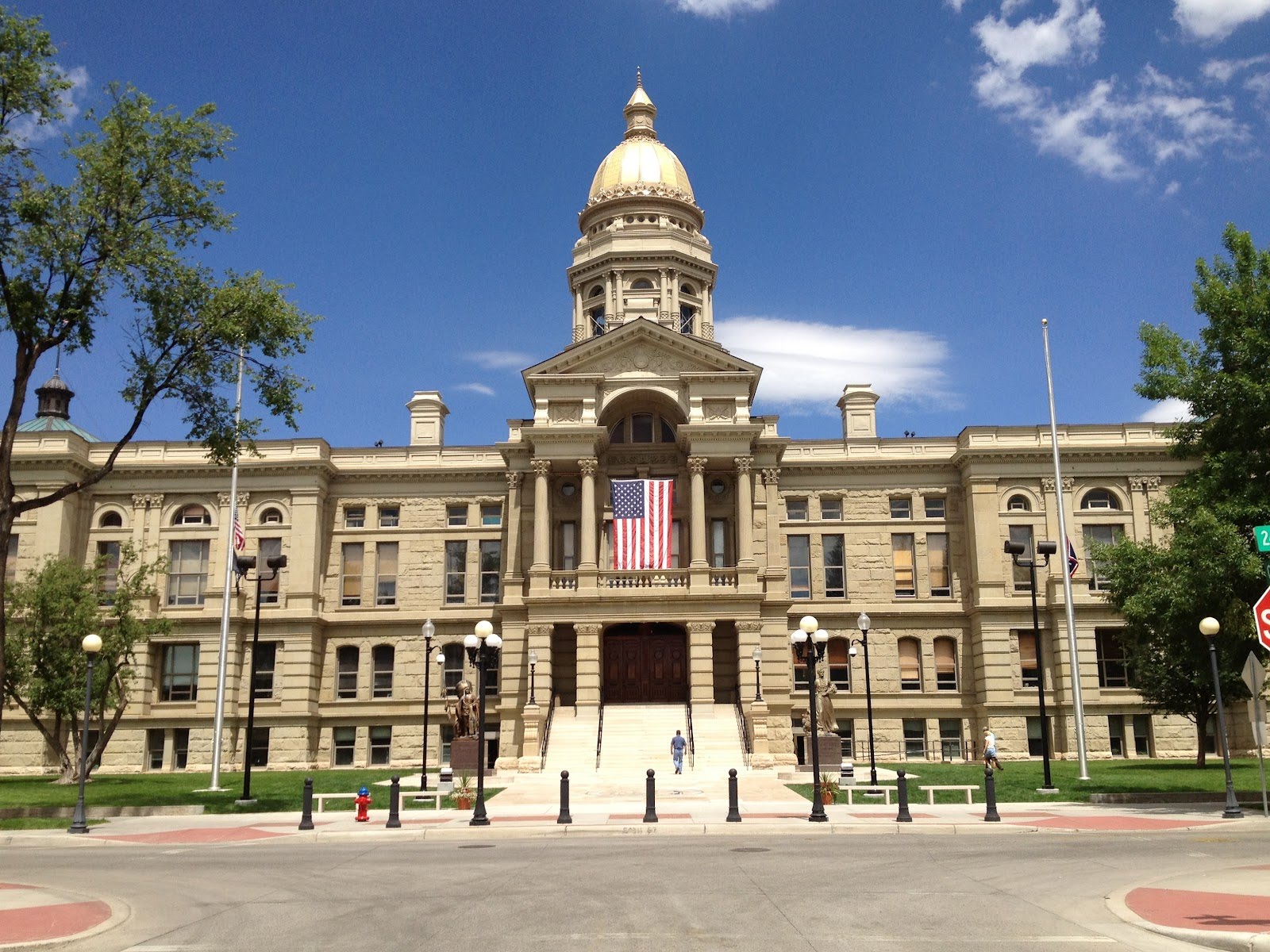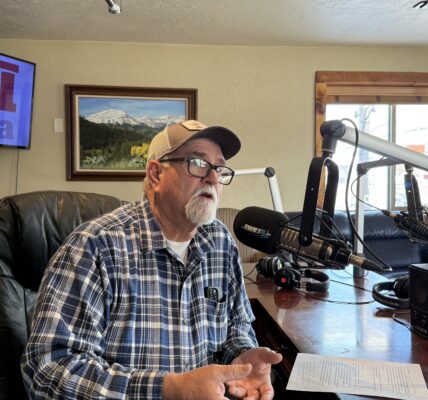By Arno Rosenfeld
Casper Star-Tribune
Via Wyoming News Exchange
CHEYENNE — The Legislature appears further away than ever on the question of how to solve Wyoming’s $660 million education deficit after a Senate committee killed the House’s school finance proposal Monday, shortly after the House killed the Senate’s version. Later in the day, a committee created to bridge the differing budget proposals from each chamber appeared to be at a stalemate on where the dollars to pay for education should come from.
Despite an impassioned defense by House Speaker Steve Harshman, R-Casper, the Senate Education Committee voted 3-2 Monday morning to strip his chamber’s key education bill and replace it with one that relied exclusively on cuts and failed to close the deficit.
On Friday, the House Education Committee had voted to indefinitely postpone the Senate’s school bill, effectively killing it.

Lawmakers have the remainder of this week to craft a budget for the next two years, covering an $850 million deficit, the bulk of which comes from the funding gap in education accounts.
Constitutionality debated
The Senate Education Committee stripped the House bill on the basis that it was unconstitutional. Bills must only cover a single topic, which must be outlined in its title. Chairman Hank Coe, R-Cody, said he believed the version of House Bill 140 before his committee was unconstitutional because it had been amended in the House to include items not in its title.
Specifically, Coe cited revenue increases to schools created by moving around funds, as well as earmarking some specific dollars to education.
“That’s our quandary,” Coe said, while praising Harshman’s overall work on the issue.
Coe cited a memo by Legislative Service Office attorney Ted Hewitt, who provided a synopsis of the law regarding what may be included in a bill. The memo determined that a House amendment made to HB 140 “may alter the bill beyond its original purpose.”
“The amendment, among other things, would provide for significant additional revenue diversions for public education,” Hewitt wrote. “The bill’s title, however, makes no mention of any revenue diversion.”
Harshman, who had advocated for the amendment in question when the House Education Committee was considering the bill, said that the House Rules Committee had determined the changes were legal.
“Did we push that title? You bet,” Harshman said. “But that’s what we’re supposed to do: push stuff and solve problems.”
Harshman dismissed the memo, which he described as written by “a junior attorney in his second year at LSO.”
A representative for the LSO declined to comment.
Hewitt qualified his memo in its introduction, writing, “Due to the constraints of the budget session, my ability to research this issue is limited and so is the legal analysis in this memorandum.”
Senate, House differ
The Senate has taken a more aggressive approach to cutting funding for public schools in Wyoming, passing a bill that included about $75 million in reductions to education spending. The House has called for closer to $30 million in reductions and covered much of the funding gap by moving revenue streams from savings accounts to operations.
But despite a lengthy presentation on the details of the House plan by Harshman, the debate Monday did not touch heavily on the substance of the two competing plans. Rather, it focused almost exclusively on whether the text of the bill was legal.
Sen. Chris Rothfuss, D-Laramie, said he supported Harshman’s plan and preferred it over the Senate’s bill but nonetheless voted to strip it due to questions over its constitutionality.
“I’ve never seen the leader of either chamber lose a constitutional argument in their own chamber,” Rothfuss said. “But I’ve never seen the other chamber happy with that argument.”
Rothfuss joined the 4-1 vote to strip the bill and replace it with one previously killed by the House. Sen. Stephan Pappas, R-Cheyenne, was the lone no vote. Rothfuss then joined with Pappas to vote against the bill as amended.
The merits of the House proposal did come up during a meeting of the “conference committee,” composed of members of the House and Senate who are meant to create a single budget bill that can win the support of both chambers.
Sen. Bruce Burns, R-Sheridan, proposed that the budget use the House’s funding model for education in the first of its two-year cycle and use the Senate model for the second year. The House model, crafted largely by Harshman, would peg certain dollars that currently go directly into savings accounts to education. The Senate version relies on spending directly out of cash reserves.
While on their face the two models result in spending the same amount of money on schools, Harshman has argued his plan offers a sustainable model where the Senate plan would quickly deplete cash reserves and require repeated appropriations from savings accounts.
Education lobbyists, including representatives from the Wyoming Education Association and Wyoming School Board Association, spoke in favor of the House’s plan during the education committee meeting. A group of students from Riverton High School also spoke, expressing concern that further cuts to education would risk the elimination of school safety resources. The Legislature cut roughly $75 million from education spending last year for two years.
“We’re begging you, please don’t add your name to the list of adults who are already failing us,” said senior Kat Tyler.
But Burns attacked both Harshman’s model and his efforts to win over lawmakers during the conference committee meeting.
“The Speaker has been hauling people into his office for his multimedia show — like a timeshare salesman — for weeks now and he’s convinced and apparently has you all convinced,” Burns told the House members on the committee.
“We think that it makes no sense,” he added. “It’s needlessly complex and unnecessarily opaque.”
Because it appeared that the conference committee, which is split evenly between lawmakers from each chamber, was not going to agree to adopt a single model to pay for education, Burns said his compromise to try each model for one-half of the budget cycle was a reasonable middle ground.
Rep. Bob Nicholas, R-Cheyenne, who chairs the committee, said that while he was intrigued by the proposal he would need to consult with his fellow state representatives, as well as House leadership.
The conference committee cleared several points of disagreement during their first meeting last week, but lawmakers appeared to be at loggerheads on several more contentious points Monday. Nicholas said the the Legislature’s leaders had hinted the session would be extended through the middle of next week — beyond its scheduled Saturday end date — and that Burns’ proposal could prevent that.
“If there are not other resolutions this could be one way we don’t come back on Monday or Tuesday,” he said.
The LSO budget director Don Richards told the committee that they needed to approve a final budget bill Monday afternoon in order to send it to Gov. Matt Mead by Tuesday night, the necessary deadline if lawmakers wanted the ability to override any potential line-item vetoes by Mead. But at press time, it was not clear when the conference committee would next meet.
In addition to the main budget bill, which includes the provisions on how to fund education, there is the question of how much, exactly, the state will spend on education. The only school finance bill that has not been killed is the one stripped and rebuilt by the Senate Education Committee Monday morning, and it remained unclear whether the full Senate will pass that measure and whether the House will accept the dramatically altered piece of legislation.





